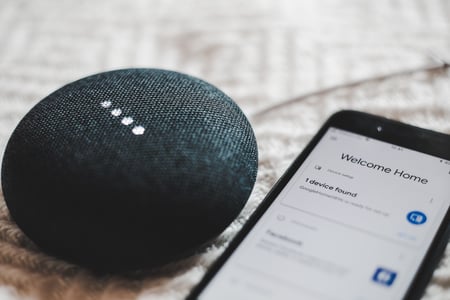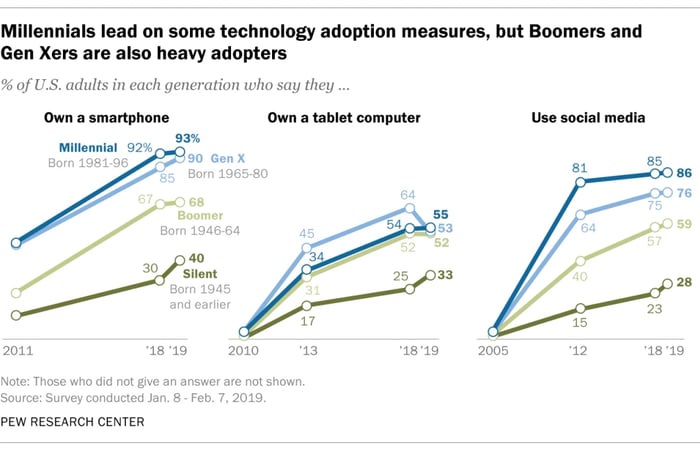Two Multifamily Misconceptions About Smart Home Technology
by Dom Beveridge | Jul 22, 2020 12:00:00 AM
 Now I'll admit that it's hard to remember what was going on in the days before the COVID-19 lockdown disrupted our industry, but stuff was going on. New technologies were already transforming operating models before any lockdown started. Forward-thinking operators were already reaping the benefits, removing friction from the day-to-day lives of their residents and site teams, and creating new automation opportunities.
Now I'll admit that it's hard to remember what was going on in the days before the COVID-19 lockdown disrupted our industry, but stuff was going on. New technologies were already transforming operating models before any lockdown started. Forward-thinking operators were already reaping the benefits, removing friction from the day-to-day lives of their residents and site teams, and creating new automation opportunities.
In our March 2020 "20 for '20" white paper, we noted the remarkable acceleration in the industry's acceptance and adoption of self-show in the previous 12 months. As social distancing measures have forced operators to find ways to show apartments without human interaction, adoption has accelerated more quickly than anyone anticipated.
Self-show provides an excellent example of an innovation that both streamlines multifamily operations and improves prospect experience. To deliver self-show, multifamily operators must solve for access control, a foundational component of the smart community. Lockdown has increased residents' dependency on delivery services, increasing the need for smart locks and building access. But despite these drivers of change, a couple of misconceptions about this technology are still holding some operators back.
Why we're curious about Smart Communities
This week we published a brand new white paper: "Smart Building Technology in Multifamily Housing, a guide to smart home technology investments and how to underwrite them." In researching the paper, we spoke to a variety of multifamily organizations, all at different stages of implementing smart home technology. We wanted to understand their technology choices and how they approached their investment decisions.
Smart home technology has such broad applications that the sources of potential benefits seem almost unlimited. It nevertheless comes at a cost, and to justify the considerable investment in evaluating, deploying and operating the technology, we must identify the sources of potential benefits and predict their return on investment.
In the paper, we discuss the numerous sources of benefit from smart building technologies. We outline the trade-offs inherent in different types of technology and their implications for return on investment (ROI). Finally, we use five case studies to demonstrate different ways to measure the financial benefits of the technology. The benefits were already compelling, and as the industry adapts to the post-COVID-19 world, they appear to have increased in urgency.
A technology for everybody
While the pace of adoption is accelerating, we feel that it is important to highlight two common misconceptions about how the industry approaches smart home technology. The first is that the technology appeals only to residents of upscale properties in the urban core. The appeal of the technology is obvious to those developing homes for the less price-sensitive and most traditionally tech-hungry demographics. But, as we demonstrate in the paper, the efficiencies that technology brings have a much broader appeal.
One of our case studies demonstrates the impact of energy savings to residents in workforce housing, delivering a win-win as both resident and landlord benefit from the efficiency. However, workforce housing is often neglected for smart home technology implementation on the basis that residents cannot easily afford the rent increases associated with the technology package.
In our view, this is the wrong way to look at the value proposition. The potential cost savings from reduced energy bills are likely more impactful to a workforce housing resident in a tertiary market than they would be to an affluent millennial in a primary market like Seattle. In many cases, saving $25 on $900 in rent has a more meaningful financial impact on the workforce housing resident than saving $50 on a $2200 rent would have on the urban professional.
While affluent millennial and Gen-Z residents tend to be the recipients of developers' attention in the urban core, they are also central to the second great misconception affecting this technology: that it appeals primarily to a young demographic.
It's easy to understand where this preconception comes from: anyone with young children will have noticed the alacrity with which they embrace digital home assistants and eschew the desktop technologies often preferred by their parents. At the same time, however, grandparents are adopting mobile-driven experiences far more quickly than previous technologies.
 % of US Adults In Each Generation Who Say They…
% of US Adults In Each Generation Who Say They…
The chart above summarizes Pew research on mobile phone and tablet ownership. In each case, the prevalence of mobile devices amongst boomers should remind us of the breadth of the potential appeal of technologies operated through a phone or a tablet. The appeal of smart home technology can extend to anyone with a mobile device - operators and investors should bear this in mind as they consider which communities are candidates for smart technology.
Having established that this is truly a technology for everyone and not just the wealthy young denizens of high-end communities in fashionable coastal sub-markets, it seems clear that all operators should understand the opportunities it offers.
In researching the paper, we discussed the investment decisions with many different companies adopting smart home technology. While the degree of focus ROI measurement varies from company to company, all reported experiencing value far beyond the tangible benefit they had used to justify implementation. Download your free copy and see how operators are boosting their communities' financial performance by improving resident and prospect experiences.
Photo by BENCE BOROS on Unsplash